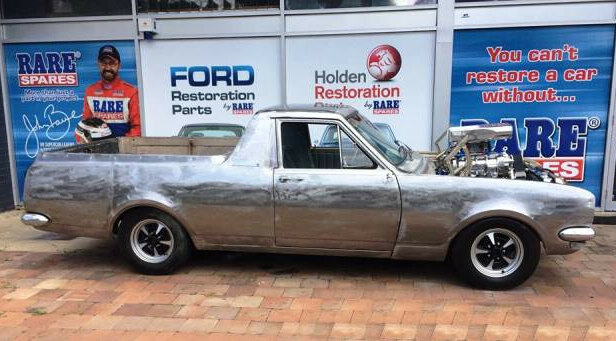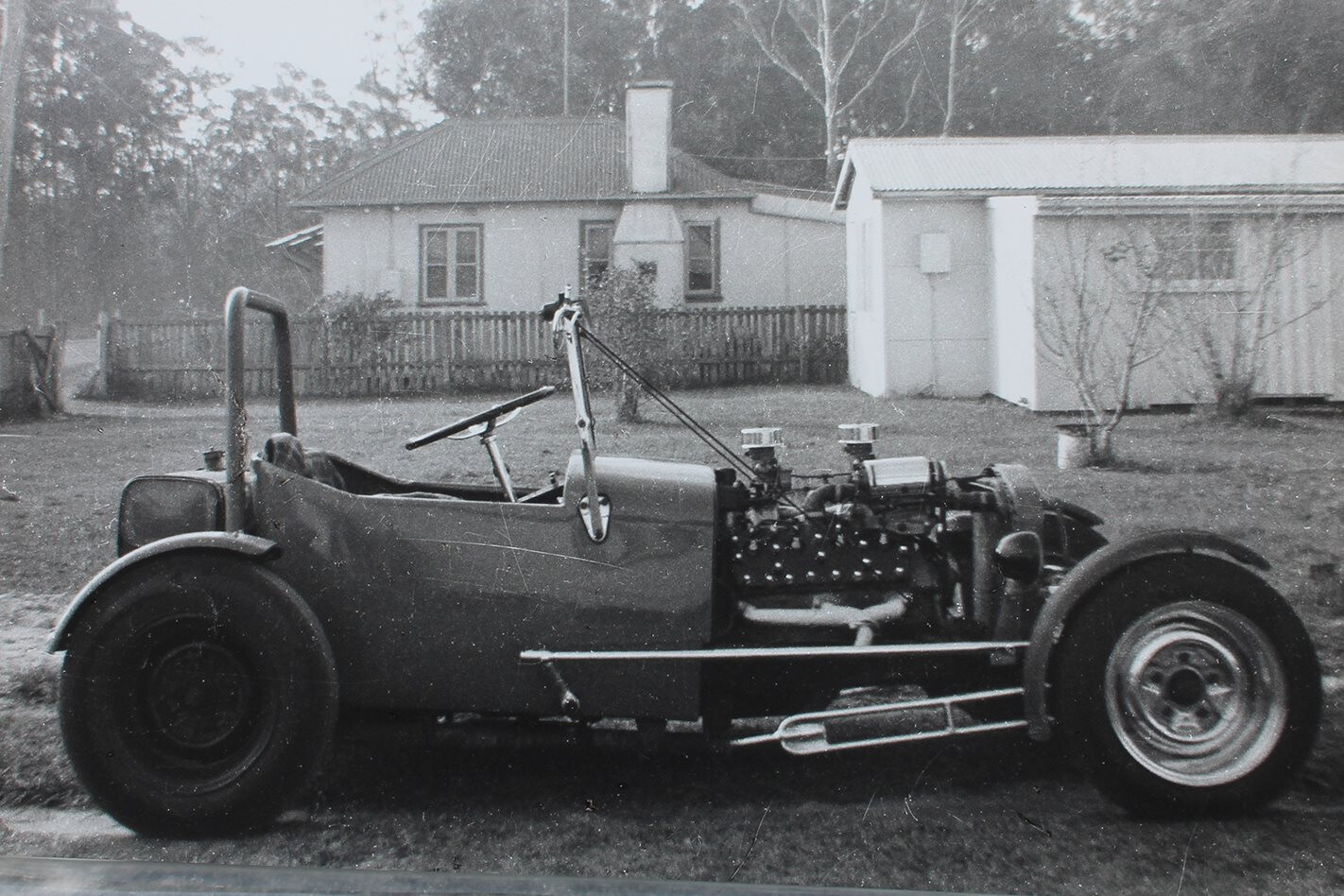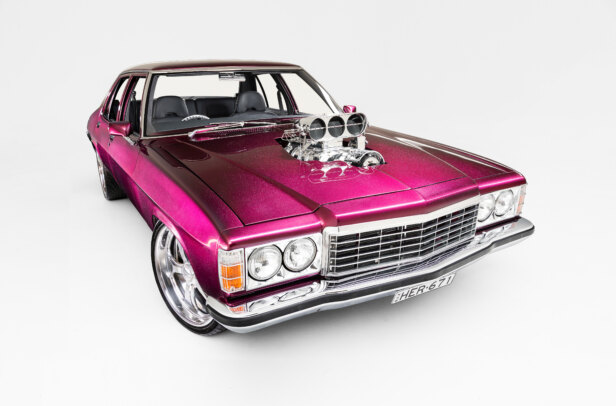Early last year, Norm and Dean Oakey announced that on 28 May 2022, Sydney’s iconic American Auto Parts (AAP) store would be closing its doors after 51 years in business. AAP’s primary supplier, Rare Spares, had made the decision to move away from a franchise model towards company-owned stores.
As you can imagine, after five decades servicing Sydney’s gearheads through one of Australia’s biggest and best-known speed shops, father-and-son team Norm and Dean have quite the story to tell.
First published in the July 2023 issue of Street Machine


How did American Auto Parts start?
Norm Oakey: Through drag racing. As a teenager, I loved drag racing. I was building an FX for myself and was going out to Castlereagh as often as I could. My dad Bill, on the other hand, was into circuit racing. However, I talked him into coming to the drags one day and that was it – he was hooked. Seeing as it had a V8, Dad thought it was a good idea to turn his ’59 Chrysler Royal into a drag car.
Eventually we decided it needed a blown Hemi, so we sent a letter off to the US for a price list. Looking at that price list and knowing what people were paying for parts out here, I thought to myself, “We could make a business out of this.” Dad had said, “If you find something you can make a dollar out of, do it.” So I did.
With great US contacts at companies like Sig Erson, Holley and Edelbrock, we started selling stuff to other racers out of our home garage. Dad was determined to make it a success and was full-time to start with. I was after hours, as I was still working full-time at Suttons, Chullora, but left within a few months. From there, it took us about 18 months to find the Homebush site and open American Auto Parts – a name we stuck with for 51 years.


When did the Homebush store open?
N: February 1971. We rented the corner shop for $55 a week, back when a new Holley carb was only $69. To help out, Mum and Dad moved into the small flat upstairs. After a few years, we bought the whole site – the corner shop, the sheds out the back and the car yard next door. Quite a few big names went through those sheds, including P&R Performance, Joe and Benny Gatt – even John Cain rented it for a while.
And business took off?
N: It certainly did, and it allowed us to upgrade the car and buy better parts. In less than 10 years, we went from the original Chrysler to a Top Fueller. We also had 18 employees; it was mighty cramped in the shop. We never advertised much; we mainly used the race cars and painted the building white to get noticed.




The window display was king.
Dean Oakey: The growth in the late 70s and early 80s was absolute madness – especially Saturday and Sunday. Back then, the cars that people were working on weren’t toys, they were their daily drivers. They were either trying get it done to go cruising on Saturday night, or to drive to work on Monday!
Eighteen – that’s a lot of staff!
N: We were lucky to have great staff over the years. My cousin Peter Rayner was a foundation staff member. Our two longest-serving employees, Steve Evans and Leonie Ballantyne, were with us for 40 years. Ken Ballantyne started with us when he was a kid at school and was with us on and off for 30 years. Jamie Norman worked at the original George Street shop plus Beverly Hills, then helped redevelop the Homebush location before coming to Prospect.
Graham Hart started on the race team before coming on board to run our Liverpool store, which he did until Bob Little took over. I can’t thank all of our great staff and loyal customers enough; they kept us going for 50 years!





Did the racing and the business always go hand-in-hand?
N: We always supported drag racing. I drove up until 1981, at which point Dad took over the driving duties. In 1984, at 58 years of age, Dad won the Australian Competition Championship.
D: Pop eventually called it a day in 1997, and I raced the dragster right through until we stopped racing in 2010, winning the Nationals three times along the way. We won a lot of races thanks to the meticulous preparation by crew chief Steve Walsh and the boys.



Was there a particular product that drove the business?
N: The Holden red motor was huge back then; V8s were pretty rare in the early 70s. On Friday afternoon, we’d have piles and piles of extractors, sports exhaust systems, carbs, intakes and chrome dress-up gear. It was all gone by Monday. We sold tons of Aunger wheels and thousands of Formuling steering wheels. Probably the biggest money-spinner was the 350 Holley and intake combo for red motors. We did them with a filter for $99.95 and sold shitloads of them.
D: As a kid, I can remember all 20 of the reground Holden six-cylinder camshafts I’d stacked up Friday being gone by Sunday. We took on PowerPak cylinder heads and cams, mainly for red motors. Arthur Johnson (who’s still going) did them for us. We were doing so many; it was a full-time job inspecting the cores and stacking them up out the back. You could barely get in the front door; every aisle was packed full of people. It was unbelievable!


When did you become a Rare Spares dealer?
N: August 1980. We were their second distributor by a very close margin, but by far their biggest. The Rare Spares stuff suited our clientele, and our association helped both businesses grow. Me and my family were close personal friends of [Rare Spares co-founder] Les McVeigh and his family. Mind you, AAP imported a lot of US brands like Painless wiring, Grant steering wheels, JAZ and RCI seats, fuel churns and harnesses. We bought enough from the US companies to convince them to make products specifically to suit Australian cars and the Australian market.
When did AAP begin to spread its wings?
N: We bought Street Performance in 1995, which Dean ran. Everyone still called it Beverly Hills Performance. It was a good business until they began widening King Georges Road.
D: Construction work ran for something like four years, and they blocked off all parking within a kilometre. It killed us, along with a lot of other businesses along that strip. I think there was a class-action lawsuit lodged by all the affected businesses.


You guys replaced the original Homebush shop with a massive new complex in 2007, but later moved the whole thing to Prospect.
D: The new store at Homebush was great. We could display stock better, the parking was better and we could even have regular open days for car clubs. However, the writing was on the wall. We started grabbing postcodes from our customers, and it became pretty obvious pretty quickly that our customer base was located in Western Sydney.
Even then, it took me quite a while to find a site, as we needed to find a location that was correctly zoned so that we could sell retail parts. We closed Homebush at 4pm Saturday and opened 8am Monday morning at Prospect. It boomed straight away, like we’d always been there.


Dean, when did you start working at AAP?
D: As a kid, I was always around after school and on the weekends. As early as 12, I was behind the counter selling stuff and working the register. Dad wanted me to get external sales and business experience, so I worked at David Jones as a manager for six years before returning to AAP full time. I stayed with the business right through ’til final call.




Comments